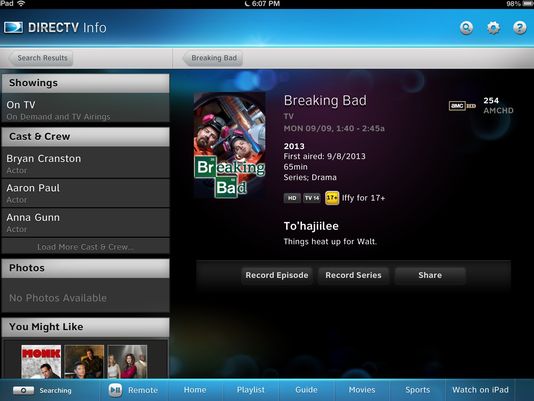Pay-TV providers, networks click to video on demand
The traditional TV establishment has not sat idly by as Internet-based streaming-video services such as Netflix infiltrated the nation's living rooms.
Pay-TV providers have slowly strengthened their own foothold in homes with newer set-top boxes that offer video on demand of not only movies, but recent TV episodes. Set-top boxes with on-demand viewing capabilities are now in about 60% of U.S. households, up from 37% in 2008, says a new Nielsen report out Monday.
Overall, about 102.7 million homes had pay-TV service from a cable, satellite or telephone company in the second quarter of 2013, down from about 103.2 million in 2012, according to Nielsen's Viewing on Demand report. Another 10.9 million homes get only broadcast TV.
Younger viewers are more likely to use VOD; about 31% of those ages 18-34 told Nielsen they used it, compared with 23% of those 35 and older.
Video on demand has caught on because the libraries of movies and TV episodes can be stored in the cloud and accessed via set-top boxes. And networks have gotten on board because they can keep commercials in VOD episodes and also include VOD viewership in their pitches to advertisers. "Video-on-demand viewing has really changed significantly over the past year," says Dounia Turrill, senior vice president for client insights at Nielsen. "It used to be very difficult to find VOD (on your pay-TV service), and now it's very easy."
Pay-TV providers and TV networks alike have turned their attention to video on demand because of the growing audience drawn to Netflix and other Internet video outlets such as Amazon Instant Video, Hulu and YouTube.
These newer digital video outlets are cutting into time spent in front of live TV, according to a recent eMarketer report[1]. Live TV remains the most popular prime-time viewing option (67% of respondents ages 18-49 watched), but nearly half (49%) also watched streaming videos during prime time.
Younger viewers, especially, are more likely to watch streamed content and online videos, with 40% of those ages 18-34 watching at least once a day, compared with 21% of those ages 35-49, the research found.
So far, the most likely content to be watched on demand is movies, which 52% of Nielsen's homes reported watching. But 29% watched general dramas that way. That makes sense, Nielsen's Turrill says, because those were what viewers were most accustomed to finding in VOD libraries. But as libraries expand with recent TV episodes, "we will be looking to see if there's a shift," she says.
Time spent watching the traditional TV is up, with the average home watching nearly 147 hours each month during the second quarter of 2013, up from about 145 hours last year, Nielsen found. Time spent viewing rose even more in African-American homes, to nearly 207 hours from more than 202 last year, while viewing time dropped a few hours in Hispanic and Asian-American homes to about 121 hours and 86 hours, respectively.
That might seem to run counter to other findings, but "television is still extremely strong and extremely relevant," Turrill says. "When you do look at platforms like VOD, they are delivered on television, but they are new flavors of delivery."
References
- ^ http://www.emarketer.com/Article/Video-Streaming-Beats-DVR-VOD-Viewing/1010193 (www.emarketer.com)










